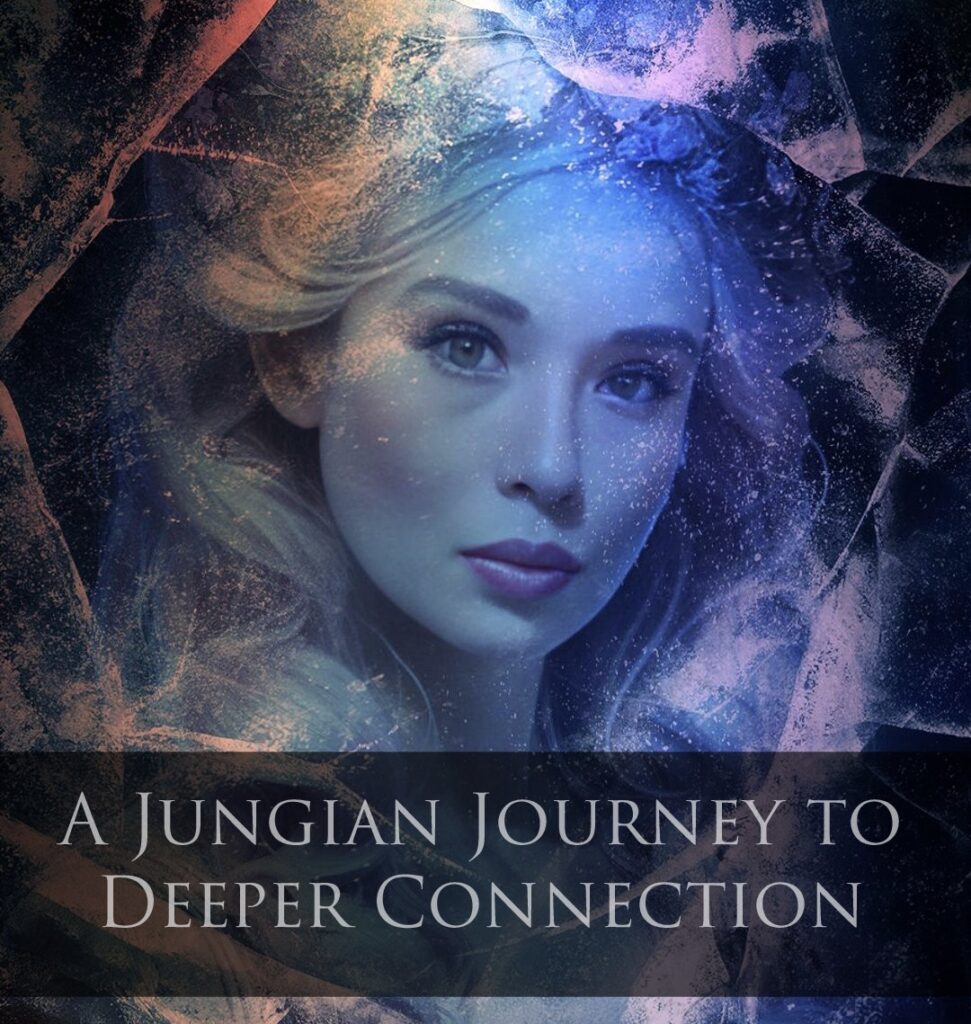(Originally written August 5,2020, 9.35pm)
Have you ever thought about how active our brains are when we are dating? Attraction can lead to a series of complex brain activities within seconds. Here’s a look at the fascinating science behind it.
Love at First Sight
Alice had a long day at work. It was only 4 pm, but she felt like it was already 9 pm. She was hesitant to stop by the grocery store but was craving steak for dinner, so she went to the nearest store.
While heading to the meat section, jackfruit caught her attention. As she was staring at it, someone said, “Excuse me, Miss, can I pass?” She looked up and saw Bob. Instantly, they felt a connection.
At this moment, light particles (photons) were absorbed by the retinas in their eyes, creating electrical signals that traveled through their optic nerves to their brains. This visual information, combined with other senses, sparked their initial attraction. The occipital lobe, responsible for visual processing, helped them recognize each other’s physical attractiveness. Features like facial symmetry and body language were processed within milliseconds, contributing to their immediate sense of attraction.
As they talked, they noticed each other’s natural scent. Humans, like many animals, release natural chemical signals called pheromones, which can influence attraction. Alice, like many women, has a sense of smell attuned to MHC (Major Histocompatibility Complex) molecules, part of the immune system. She felt drawn to Bob because their MHC molecules were different, which often signals genetic compatibility.
The olfactory bulb, located in the forebrain, plays a critical role in detecting pheromones. When Alice noticed Bob’s scent, the olfactory signals bypassed the thalamus (which usually processes sensory information) and directly influenced the brain’s limbic system, which is involved in emotion and memory. This connection helps explain why certain scents can evoke powerful emotional responses and memories, reinforcing attraction.
Bob’s deep voice also played a significant role in her attraction. Neurologically, deeper male voices are often associated with higher levels of testosterone, which can signal good health and genetic fitness. When Alice heard Bob’s voice, the auditory cortex in her brain processed the sound, and this auditory input activated the reward centers in her brain, including the ventral tegmental area (VTA) and the nucleus accumbens. These areas are associated with pleasure and motivation, enhancing her overall interest in him.
Bob’s deep voice affected Alice because the auditory cortex processed the sound, linking it to positive attributes associated with masculinity and genetic fitness. This process involves the temporal lobes, which play a role in auditory perception and language comprehension. The brain’s ability to interpret these auditory signals as indicators of a potential mate’s suitability highlights the complex interplay between sensory processing and attraction.
When Alice and Bob first saw each other, their brains quickly processed visual cues. The occipital lobe, responsible for visual processing, helped them recognize each other’s physical attractiveness. Studies show that features like facial symmetry and body language can be processed within milliseconds, contributing to an initial sense of attraction.
Alice and Bob’s first date
They started texting frequently and soon set a dinner date for Saturday night at 7 pm at an Italian restaurant.
ALICE
By 6 pm, Alice was anxious. She struggled to decide what to wear and which makeup would match her dress. In her nervousness, she dropped her eyeshadow palette. This anxiety was due to high cortisol levels, a stress hormone that affects brain function and coordination. The hypothalamus, which regulates the stress response, signaled the adrenal glands to release cortisol, preparing her body for a perceived challenge.
She arrived at the restaurant exactly at 7 pm and instantly recognized Bob. “Oh my God! He looks really good,” she thought. As they talked about their interests and hobbies, Alice found herself increasingly attracted to Bob, thinking he had the qualities she wanted in a boyfriend. This attraction was not just emotional but also deeply rooted in her brain’s neurochemistry.
Bob looked at Alice intimately, gave her a kiss, and whispered, “You look really good, Alice.” This moment increased Alice’s oxytocin levels, often called the love hormone, which creates feelings of contentment and security. The hypothalamus, which also produces oxytocin, plays a critical role in social bonding and attachment.
When Alice came home, she couldn’t stop thinking about their date. Her serotonin levels dropped, making her feel obsessive and preoccupied with thoughts of Bob. Serotonin is a neurotransmitter that helps regulate mood and social behavior. Low levels of serotonin are associated with obsessive thoughts and feelings of longing. Alice’s prefrontal cortex, responsible for decision-making and social behavior, was influenced by these serotonin fluctuations, enhancing her longing for Bob.
This longing was driven by high dopamine levels, which activated the brain’s reward system, giving her a pleasurable feeling. Dopamine is crucial for the experience of pleasure and reinforcement of rewarding behaviors. The Ventral Tegmental Area (VTA) is part of the brain’s reward system, associated with wanting, motivation, focus, and craving. When Alice thought about Bob, the VTA released dopamine, which spread to other areas like the nucleus accumbens and prefrontal cortex, reinforcing her feelings of attraction and desire to see him again.
The nucleus accumbens, often referred to as the brain’s pleasure center, plays a central role in the reward circuit. This area processes the rewarding feelings and reinforces behaviors that are perceived as beneficial, like thinking about or seeking out Bob. The prefrontal cortex, which is involved in complex cognitive behavior, decision-making, and moderating social behavior, integrates these reward signals and influences Alice’s actions and thoughts towards Bob.
Additionally, the amygdala, which processes emotions, was active in reinforcing the emotional significance of her experiences with Bob. The hippocampus, involved in forming new memories, helped Alice store and recall the positive interactions she had with Bob, further strengthening her attraction.
Bob
Meanwhile, Bob was excited too, though he tried to remain calm. He was also experiencing increased cortisol levels due to the excitement of their date. This response is part of the body’s natural fight-or-flight mechanism, preparing him to make a good impression.
Seeing Alice in a red dress, Bob felt a surge in testosterone, which heightened his sexual attraction to her. This hormone, produced in the brain’s hypothalamus and released into the bloodstream, enhances libido and promotes assertive behavior. The visual stimulus of the red dress likely triggered activity in Bob’s amygdala, a part of the brain involved in processing emotions and arousal.
Because he was very interested and sexually stimulated, his vasopressin levels rose. Vasopressin is linked to behaviors that promote long-term, monogamous relationships. The release of vasopressin in the brain is associated with feelings of bonding and attachment, reinforcing the connection he felt with Alice. However, when Bob returned home, his serotonin levels dropped, making him feel more passive. Low serotonin levels can lead to feelings of withdrawal and a decrease in mood stability.
The interplay between these various neurotransmitters and hormones highlights the complexity of human attraction and bonding. Bob’s feelings of excitement and attachment were chemically similar to Alice’s, driven by the same reward and emotional centers in the brain, even if they experienced and processed these emotions differently.
Alice and Bob’s interactions activated multiple brain regions responsible for processing sensory information, emotions, and reward. Understanding the neurobiological basis of attraction reveals how deeply our emotions and behaviors are intertwined with brain chemistry, reinforcing the profound complexity of human relationships. This knowledge helps explain why we feel the way we do when we’re attracted to someone and underscores the importance of both biological and emotional factors in the experience of falling in love.
The Second Date
For their second date, Alice invited Bob to her apartment for dinner. After eating, they moved to the living room to watch a movie. Bob kissed her intimately, which increased Alice’s oxytocin levels by 51%, making her feel closer to him. Oxytocin is known for its role in bonding and attachment, deepening feelings of intimacy and trust between partners. The increase in oxytocin triggered activity in the hypothalamus and was released into the bloodstream, affecting various brain regions associated with social bonding and emotional regulation.
Bob’s testosterone levels also rose, which can sometimes block oxytocin’s effects, making him feel differently than Alice. Testosterone, produced by the hypothalamus and released by the testes, can dampen the emotional bonding effects of oxytocin by activating different neural circuits. This hormonal interplay highlights the complex neurochemical balance that influences how men and women experience intimacy differently.
After they had sex, Bob’s vasopressin levels, which are linked to bonding and long-term commitment, initially increased but then dropped. Vasopressin, produced in the hypothalamus and released by the pituitary gland, plays a crucial role in social behavior and bonding. This hormone’s fluctuation can significantly impact post-coital feelings and the development of emotional attachment.
Both Alice and Bob experienced activation in their brain’s reward system, particularly in areas like the ventral tegmental area (VTA) and nucleus accumbens. These regions release dopamine, creating feelings of pleasure and reinforcement. Dopamine, often referred to as the “feel-good” neurotransmitter, is central to the brain’s reward system and is crucial for the sensation of pleasure.
The hypothalamus also plays a crucial role by regulating hormones like oxytocin, cortisol, and testosterone, which influence bonding, stress, and sexual attraction. The interaction of these hormones and neurotransmitters in the hypothalamus and their subsequent effects on the brain’s reward and emotional centers underline the complex biochemical foundations of romantic relationships.
Beyond the Dating Phase
According to a study by Florida State University, “It’s not just the neurotransmitters that are important; you also need receptors. Neurotransmitters tell your body to build these receptors. You need enough neurotransmitters to create receptors, which are then filled by those neurotransmitters.” This means it takes time for Bob to reach the same emotional level as Alice. The process of developing new receptors in response to increased neurotransmitter levels is part of the brain’s plasticity, allowing it to adapt and strengthen emotional connections over time.
Neuroplasticity allows for the strengthening of synaptic connections, which is essential for forming long-term emotional bonds. As neurotransmitters like dopamine, oxytocin, and serotonin interact with their respective receptors, they facilitate changes in neural circuits that underpin attachment and love. This process involves multiple brain regions, including the prefrontal cortex, which plays a role in planning and decision-making, and the hippocampus, which is critical for memory formation. These areas help solidify the emotional experiences shared between Alice and Bob, making their bond stronger over time.
The high levels of oxytocin in Alice’s system made her feel deeply in love. Oxytocin influenced her rational thoughts, making her see Bob as her “soulmate.” The prefrontal cortex, affected by oxytocin, contributes to this perception by enhancing trust and reducing social anxiety, fostering a sense of security and attachment. Oxytocin’s role in modulating the activity of the amygdala, which processes fear and emotional responses, further supports the reduction of anxiety and the enhancement of social bonds.
However, Bob didn’t feel the same way yet. His emotional responses and bonding processes were still developing, influenced by different hormonal and neurotransmitter levels. The delay in emotional synchronization between Alice and Bob can be attributed to the gradual process of receptor development and neural adaptation required to achieve similar levels of emotional attachment.
Just a Thought…
Was Alice really in love, or was it just the oxytocin affecting her autonomic nervous system? Understanding the chemical reactions in our bodies when we are dating can help us see that love is both a biological and emotional experience. The autonomic nervous system, particularly the sympathetic and parasympathetic branches, regulates physiological responses to emotional stimuli. Oxytocin’s influence on the autonomic nervous system can induce relaxation and reduce stress, contributing to feelings of love and attachment.
Understanding these processes can shed light on why we feel the way we do when we’re attracted to someone. It’s a combination of sensory input, emotional responses, and hormonal changes that create the complex experience of falling in love. Sensory input from visual, auditory, and olfactory cues interacts with the brain’s reward and emotional centers, creating a rich experiences that drive attraction and bonding.
This challenges the old saying, “Love conquers everything,” or perhaps we should say, “Don’t let oxytocin conquer you.” By appreciating the intricate interplay of neurochemistry and emotional experiences, we can better understand the nature of romantic relationships and the biological foundations of love.
References
- Janeway CA Jr, Travers P, Walport M, Shlomchik MJ. “Immunobiology: The Immune System in Health and Disease.” 5th edition. New York: Garland Science; 2001. Available from: NCBI Bookshelf
- Wedekind, C., Seebeck, T., Bettens, F., & Paepke, A. J. (1995). “MHC-dependent mate preferences in humans.” Proceedings of the Royal Society B: Biological Sciences, 260(1359), 245-249. DOI: 10.1098/rspb.1995.0087
- Garver-Apgar, C. E., Gangestad, S. W., Thornhill, R., Miller, R. D., & Olp, J. J. (2006). “Major histocompatibility complex alleles, sexual responsivity, and unfaithfulness in romantic couples.” Psychological Science, 17(10), 830-835. DOI: 10.1111/j.1467-9280.2006.01789.x
- Trowsdale, J., & Knight, J. C. (2013). “Major histocompatibility complex genomics and human disease.” Annual Review of Genomics and Human Genetics, 14, 301-323. DOI: 10.1146/annurev-genom-091212-153455
- Penn, D. J., & Potts, W. K. (1999). “The evolution of mating preferences and major histocompatibility complex genes.” The American Naturalist, 153(2), 145-164. DOI: 10.1086/303166
- Ziegler, A., & Kentenich, H. (2011). “MHC and mate choice in humans: A review.” Psychoneuroendocrinology, 36(1), 1-21. DOI: 10.1016/j.psyneuen.2010.08.026
- Roberts, S. C., & Little, A. C. (2008). “Good genes, complementary genes and human mate preferences.” Genetica, 134(1), 31-43. DOI: 10.1007/s10709-008-9253-0
- Fisher, H., Aron, A., & Brown, L. L. (2005). “Romantic love: An fMRI study of a neural mechanism for mate choice.” The Journal of Comparative Neurology, 493(1), 58-62. DOI: 10.1002/cne.20772
- Zatorre, R. J., & Belin, P. (2001). “Spectral and temporal processing in human auditory cortex.” Cerebral Cortex, 11(10), 946-953. DOI: 10.1093/cercor/11.10.946
- Savic, I., Berglund, H., Gulyas, B., & Roland, P. (2001). “Smelling of odorous sex hormone-like compounds causes sex-differentiated hypothalamic activations in humans.” Neuron, 31(4), 661-668. DOI: 10.1016/s0896-6273(01)00390-7


